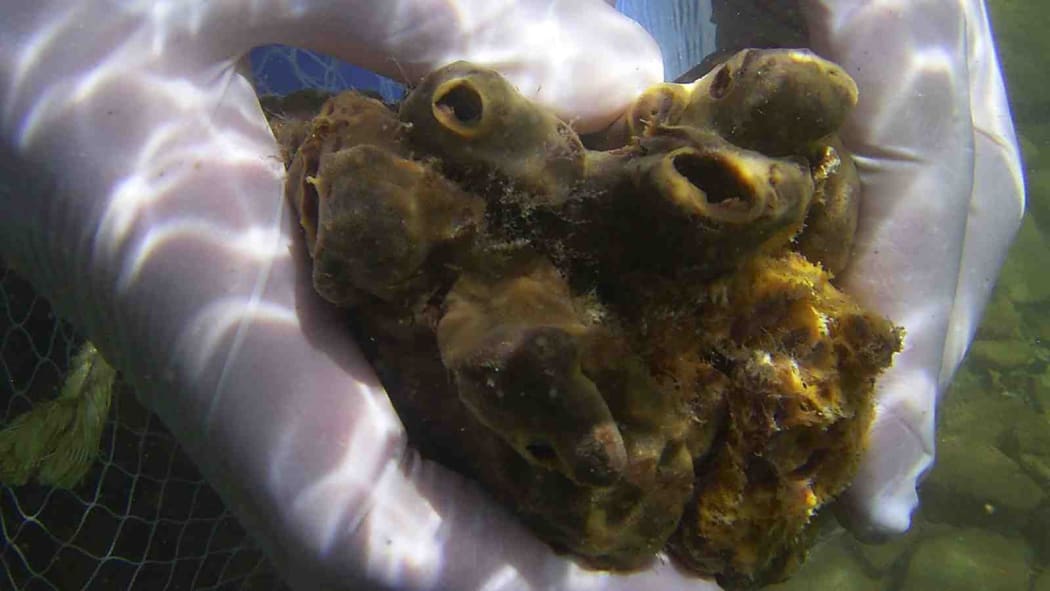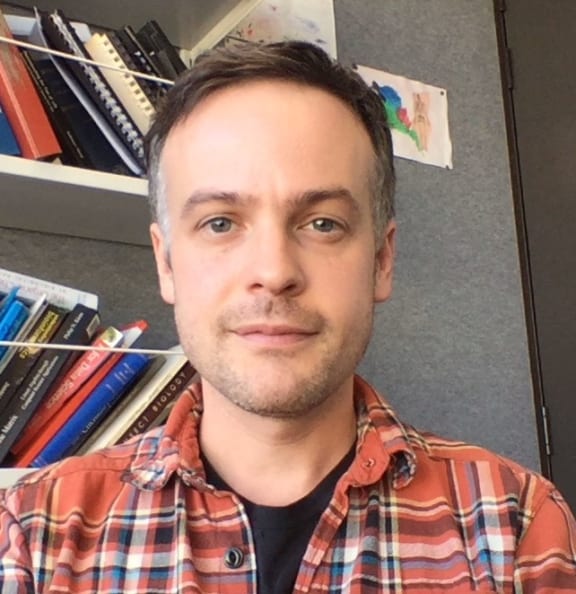New Zealand researchers are looking at how they can reproduce the cancer-killing compounds uniquely produced in native sponges, for further research and to develop treatments.
The cancer-fighting properties of the cytotoxins produced by New Zealand’s Mycale henscheli sponge have been known for some time, metagenomics lecturer Jeremy Owen tells Sunday Morning's Wallace Chapman.

The New Zealand sea sponge with cancer-killing properties. Photo: supplied
"This observation was essentially made by taking sponges and grinding them up and testing them against cancer cells and seeing that they kill these cells.
"More recently, people have discovered that the sea sponges themselves may not actually be the sources of these really interesting compounds, they might actually be produced by bacteria that are living in the sea sponge and that's where our research fits into the picture."
Unfortunately, there's simply not enough of the chemical to go around, Dr Owen says, so he is overseeing a team to identify how to recreate it.

Dr Jeremy Owen Photo: Supplied
"The only way to get them currently, the most efficient way is to go diving and collect sponges and grind them up - which is tricky, and they're present at vanishingly small quantities.
"You can also synthesise them using total chemical synthesis, but they're really interesting and intricate structures. That's really difficult to do at any great scale.
"What we're really trying to do is develop a sustainable source so we can get enough of these things to push them forward to the next level of development as therapies."
As it is, the particular sponge they're looking at is only found in the waters all up and down the coast of New Zealand.
"There are certainly other marine sponges around the world that have different collections of cytotoxic compounds, or compounds that have potential use in cancer therapy, but this sponge is pretty unique to us."
He says they approached the problem by looking at the genetic makeup of the bacteria on the sponges.
"What's known is that they have microbes that are quite distinct from other environments or things that are living sort of free in the ocean and that you can't really cultivate these bacteria outside of the sponge.
"So, the only way we could get at them was to actually grind up this whole sponge and sequence … all of these bacterial genomes simultaneously, because we couldn't grow them individually."
He says they've been fairly successful.
"We've identified the bacteria that produces the compound that we're interested in, we can see the complete collection of genes - and there are over 30 genes that are responsible for putting this compound together - but we can see, we think, the entire biosynthetic pathway."
The next step, he says, is to develop a sustainable way of producing more of the cytotoxic compound they are interested in so it can be used for further research, and eventually - possibly - treatment.
"The compounds that are found in these sponges are quite unique in what they target and how they kill cancer cells so there's the potential that they may be able to either augment existing therapies or perhaps target things that are not susceptible to therapies.
"Since we have the entire genome sequence we can say something about the metabolic requirements of the bacteria that produces it … to try and enable this previously uncultivatable bacteria to become cultivated in the lab.
"The other thing is we can actually use those genes, that collection of blueprints, to try and build a new strain in the lab that takes those genes and uses it to produce the compound in a laboratory setting."

